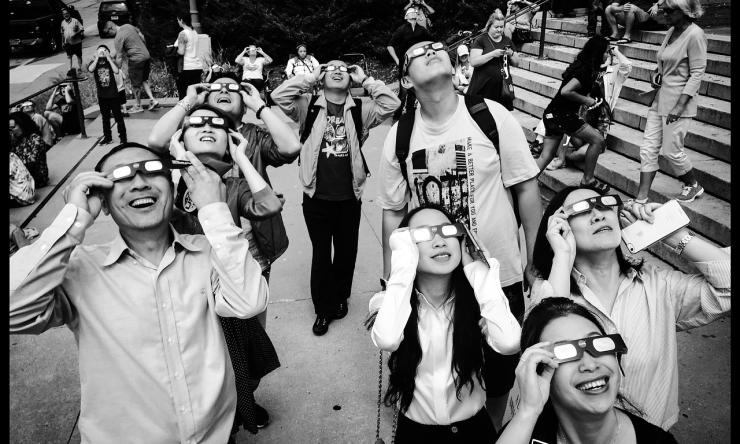Total solar eclipse eye safety
On April 8, 2024, a total solar eclipse will be visible across parts of North America, passing over the United States, Mexico and Canada. Whether you will be in the path of totality or viewing a partial eclipse, it is crucial to take precautions to prevent damage to the eyes. A Baylor College of Medicine ophthalmologist provides tips for how to safely look at the eclipse.
“Watching the eclipse without proper eye protection – even for a short amount of time – can lead to permanent vision loss,” said Dr. Christina Weng, professor of ophthalmology at Baylor. “As a retina specialist, I have personally diagnosed several patients with solar retinopathy, especially around the time of eclipses when a lot of people are looking at the sun for a prolonged period of time.”
- Watching the eclipse without protection can damage the retina, a very important, light-detecting part of the eye. This damage is referred to as solar retinopathy and often affects the macula – a critical part of the retina responsible for central vision.
- Clouds block only a negligible portion of the sun's UV rays. Watching the eclipse without proper eye protection, even on a cloudy day, can lead to permanent eye damage.
- Retina specialists often see clusters of these cases around the time of eclipses. Patients can present with blurry vision or a missing central patch of vision either in one eye or both. Unfortunately, no reliable treatment exists for solar retinopathy. Although some may recover vision as their retina attempts to heal itself, many will not, so prevention is key.
- Avoid staring at the sun altogether; however, if you decide to view the eclipse, always wear special protective eyewear that meets the worldwide standard known as ISO 12312-2.
Patients can learn more about their retinas and solar retinopathy by visiting the American Society of Retina Specialists website and the American Academy of Ophthalmology website.










